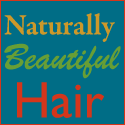Wednesday, August 11, 2010
HORSETAIL...THE MINERAL RICH HERB...
Often when looking for a “natural” hair conditioner or hair growth aid, we turn to the herbal kingdom. As we go through our herbal options a plant that quickly comes to our attention is horsetail. This article explores the beneficial qualities of horsetail as a health and beauty aid.
Horsetail Background
Horsetail is a member of the Equisetaceae family. The type used in cosmetics and shampoos most often is Equisetum arvense L. Horsetail has many colorful folk names including scouring rush, corncob plant, horsetail grass, shavegrass, pewterwort and bottle brush. The Latin root equus, meaning horse, and seta, which means bristle, come together to form part of its botanical Latin name. Its common name “horsetail” refers to the herb’s thin, branchlike leaves which in some ways are similar to the hair of a horse’s tail. It is called scouring rush because the durable plant can be used as a natural scouring aid for pots, pans and pewter, as well as in refining some forms of art as a natural sandpaper.
Horsetail descends from the huge, tree-like plants of the Paleozoic era some 400 million years ago. Closely related to ferns, horsetail is a non-flowering weed found throughout North America, Europe, Asia and the Middle East. It is perennial plant, with hollow stems and shoots reminiscent of asparagus.
To prepare horsetail for use, the young shoots are harvested in the early spring and dried; it is also tinctured or even eaten, prepared like asparagus. As horsetail dries, silica crystals form in the stems and branches, lending the herb its scouring ability. Later in the year, horsetail levels rise significantly and then it can be an irritant to the kidneys.
Horsetail has a venerable history in Herbalism traced back to ancient Rome and Greece where it was used to stop bleeding, heal ulcers, hemorrhoids, wounds and to treat tuberculosis, anemia, as well as kidney ailments. As a traditional European folk remedy, horsetail has been used as a diuretic to reduce swelling and fluid retention. Horsetail is approved by the German Commission E as a diuretic. Horsetail is used to treat bladder infections and incontinence as well as bed wetting. This is because internal use of the herb reduces the urge to urinate. Horsetail is used to treat osteoporosis, kidney stones, urinary tract inflammation and as a topical wound healer. Horsetail has been recommended by some herbalists as a treatment for tumors and certain cancers.
Horsetail: the Health and Beauty Aid
Key to our concerns here with naturally curly hair and skincare treatments is the silica and minerals contained in horsetail. Horsetail stems are imbued with ample silica and silicic acids; in fact, it contains the most silica known in the plant kingdom. Silica forms collagen, a protein found in the skin, bones, cartilage, ligaments and connective tissues. Silica also helps bind protein molecules to many tissues in the body. The silica content helps strengthen weak, brittle, damaged hair, giving it vitality and shine with regular use.
There is a high mineral level as well including potassium, selenium and manganese. The saponins and flavonoids it contains help the skin regenerate, improving elasticity of skin and hair, promoting hair growth. Since bone, hair and fingernails require high mineral levels, horsetail is taken as a tea, tincture or applied topically as shampoo, conditioner, soak or healing balm. As a healing balm, it is used in many treatments for pattern balding.
Those with very dry hair should take note: Horsetail has a powerful antiseptic property which means excessive use could further dry out your hair. On the other hand, the astringent herb helps eliminate excessive oiliness for those with oily scalps, and also aids in removing styling product build up. Used in shampoo and conditioner horsetail is a useful remedy for dandruff, eczema, psoriasis and other troubling skin ailments. Because it promotes circulation, horsetail assists in nourishing and strengthening hair follicles.
Using Horsetail
Many shampoos, conditioners and hair growth aids contain horsetail extract. To create your own hair rinse:
2-4 teaspoons dried horsetail
Cup of boiled water
Add the horsetail to a cup of boiled water (still hot but not boiling). Let steep 15-20 minutes; strain; cool. Rinse through hair and leave on for 15-20 minutes. Rinse and style as usual. You can also strain and drink this tea warm 2-3 times per day with honey. Taking the tea internally is believed to help the hair, skin and nails the same way as applying topically.
Contraindications
The German Commission E monograph suggests using only 6 grams of the herb per day for internal use. Excessive topical use can cause dermatitis. A 2 teaspoon tincture can be used (10 ml), 3 times per day. Horsetail is generally considered safe provided the Equisetum arvense species is used. Equisetum palustre, for example, contains toxic alkaloids that are well-known livestock poisons. Horsetail is not recommended for women who are pregnant or nursing. Certain drugs may interact with horsetail as well. The crude form of the herb may destroy the B vitamin thiamine unless it is refined in a way to prevent this from happening.
ENJOY!!!
Posted by Unknown at 9:11 AM
Labels: horsetail herb
Subscribe to:
Post Comments (Atom)























0 comments:
Post a Comment